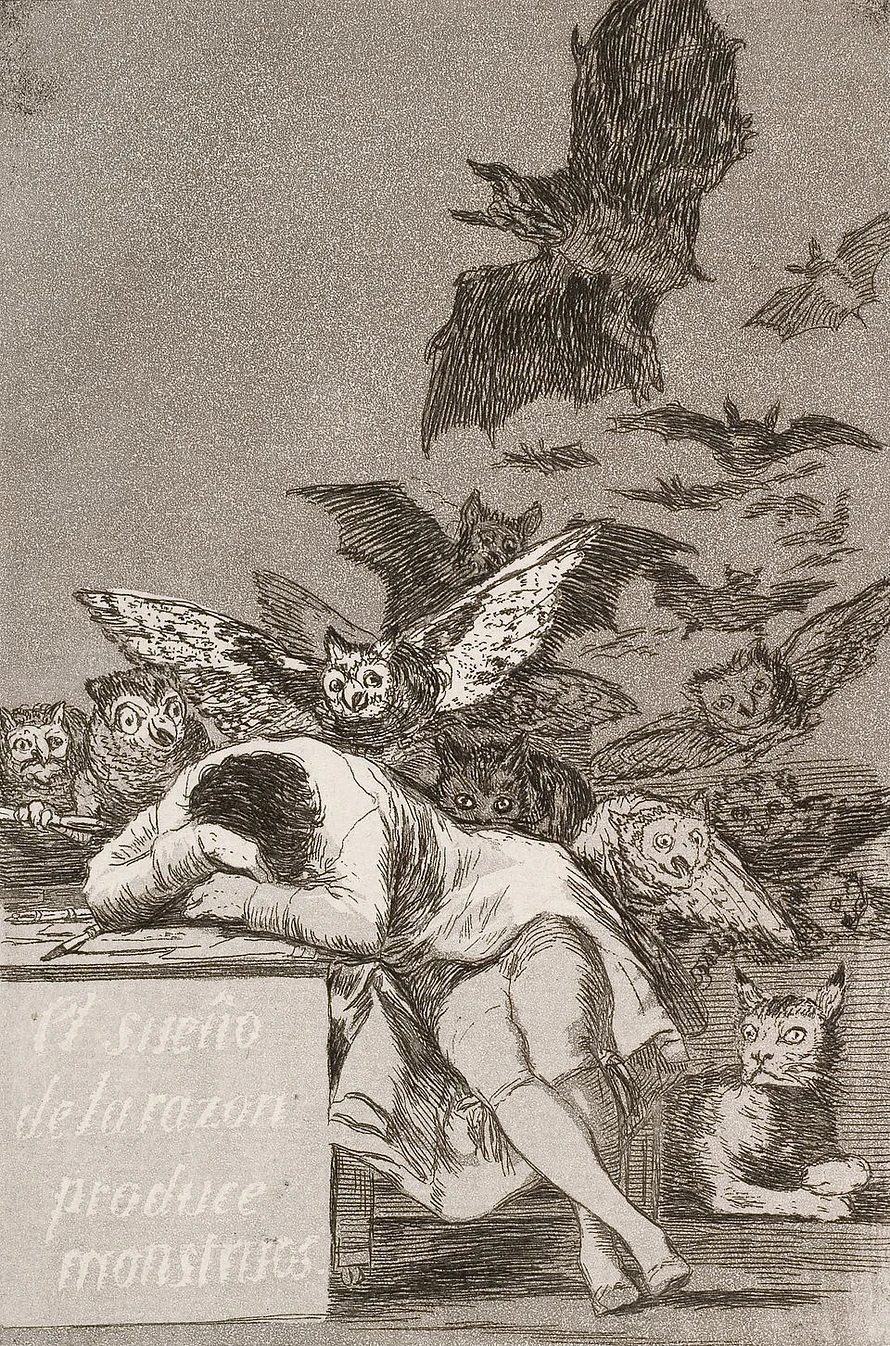The Sleep of Reason Produces Monsters: Goya’s Warning to a World in Darkness
Explore the meaning of Francisco Goya’s The Sleep of Reason Produces Monsters, a haunting etching that symbolizes the dangers of ignorance, superstition, and unchecked imagination.
What Does The Sleep of Reason Produces Monsters Mean?
Francisco Goya’s famous etching The Sleep of Reason Produces Monsters (El sueño de la razón produce monstruos) is one of the most iconic images in art history—and one of the most misunderstood. Created around 1797–1799 as part of his influential print series Los Caprichos, this artwork depicts a man slumped over a desk, asleep, while owls, bats, and other ominous creatures emerge from the darkness around him.
The message? When reason sleeps, the monsters of the mind—fear, superstition, and madness—take over.
A Turning Point in Goya’s Career
This work marked a dramatic shift in Goya’s style and purpose. Though originally known as a court painter producing portraits and decorative art, Goya used Los Caprichos to launch a biting social critique of late 18th-century Spanish society.
The Sleep of Reason Produces Monsters is plate 43 of the 80-print series and serves as its philosophical centerpiece.
Symbolism in the Etching
-
The sleeping man is often interpreted as Goya himself—an Enlightenment thinker disillusioned with the irrationality of the world around him.
-
Owls, associated with wisdom in some cultures, here appear sinister and mocking, representing corrupted knowledge.
-
Bats symbolize darkness and fear.
-
Cats, goblins, and ghostly figures in other Caprichos prints support the theme of a world overwhelmed by the absurd and grotesque.
Goya originally included a caption: "Imagination abandoned by reason produces impossible monsters; united with her, she is the mother of the arts and the source of its wonders." This reinforces the idea that reason must guide imagination, or chaos will follow.
Social Critique and Enlightenment Influence
Goya created this work during a time of rising political tension, corruption, and censorship in Spain. Influenced by Enlightenment ideals, he believed in reason, science, and education—but he also saw how superstition, religious dogma, and ignorance were still deeply rooted.
The Sleep of Reason Produces Monsters is not just personal—it’s political. It’s a warning to society: when critical thinking is silenced, dark forces take control.
Goya’s Legacy in Visual Satire
This etching paved the way for later movements like Romanticism and Surrealism. Artists such as Salvador Dalí and Max Ernst would later explore similar themes of the subconscious, imagination, and fear.
Today, the image of Goya slumped over his desk, surrounded by creatures of the night, still resonates—in a world where misinformation and irrational fears continue to thrive.
Conclusion
Goya’s The Sleep of Reason Produces Monsters remains a timeless masterpiece—both a personal expression of artistic anxiety and a profound critique of society’s failure to think critically. It reminds us that reason isn’t just a tool of science or politics—it’s a defense against the monsters within us all.
Explore More from Goya
→ Get your Sleep of Reason Phone Case HERE
→ Discover the darkness of Saturn Devouring His Son and the haunting Witches’ Sabbath in our Goya series.
#TheSleepOfReasonProducesMonsters #FranciscoGoya #LosCaprichos #DarkArt #ArtHistory #EnlightenmentArt #SpanishArt #GoyaExplained #Printmaking #SocialCritique #GoyaEtching #ReasonVsSuperstition

